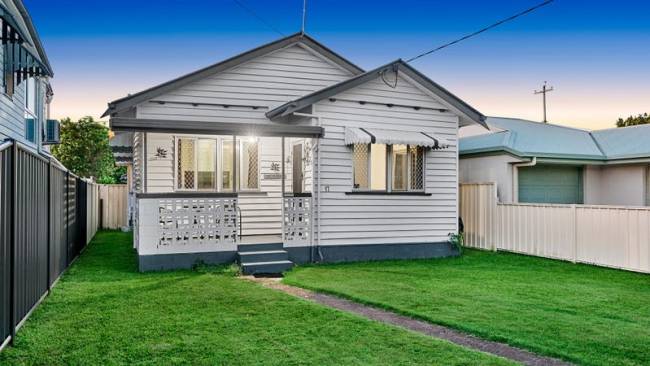The A-Z story of the history behind Adelaide’s suburbs
You may know a bit about the history of your city or town but how much do you know about your own suburb? Tom Bowden went searching for the stories behind the postcodes.
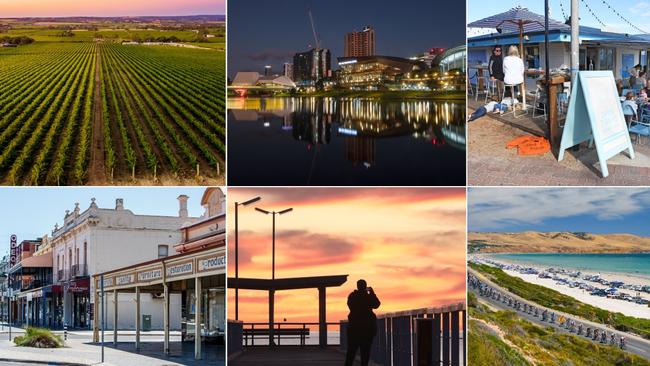
When you give someone your address, you’re telling them a lot more about where you live than you realise.
Suburb names provide a snapshot of an area’s history, who settled there, how people lived and what it used to look like.
Flinders Park, for example, was named after explorer Matthew Flinders, and many of the streets within the suburb are named after our early explorers.
Munno Para was taken from an aboriginal word meaning “golden wattle creek”.
Blackwood was named after dark-barked blackwood or peppermint gum trees that grew there.
We have lost some good suburb names as well, as boundaries were changed and suburbs were merged and renamed.
Kilburn residents used to live in Little Chicago, Morphett Vale was once known as Emu Downs and Rosewater once bore the name of a famous bear, Paddington.
And Slapes Gully doesn’t quite have the same ring to it as Burnside.
Other German-sounding names were changed during World War I because of anti-German sentiment.
Manager for Roads and Crown Support for the Department of Planning, Transport and Infrastructure, Bill Watt, said naming rules were in place to ensure all South Australian suburb names were uniquely South Australian.
“They need to relate to the heritage and history, either aboriginal or European, of the area we’re dealing with or can be descriptive of its location,” he said.
“The boundaries need to be logical so they form a community and don’t create any issues for access, particularly for emergency services, and the names cant be duplicated in South Australia and preferably shouldn’t be duplicated from somewhere else in the country.”
Glenda Cameron, of Edwardstown, is the great, great, great grand daughter of Alexander Christie, who arrived on the Sir Charles Forbes in 1839 and whose son Lambert Christie settled and established a farm in the now Christies Beach.
She said suburb names tell us a lot about how an area used to be.
‘When you consider what some of these pioneers did when they arrived, I just think it’s wonderful to celebrate what these people did,” she said.
“I think it’s a great way to preserve our heritage and it’s important that we do.”
The A-Z of the history of Adelaide’s suburbs
Aberfoyle Park
German Christian Sauerbier owned land near Happy Valley. His son, John Chris Sauerbier changed his name to Aberfoyle after an area in Perthshire, Scotland, during WWI.
Adelaide
Named after Adelaide of Saxe-Meiningen, queen consort to King William IV, and founded in 1836 as the planned capital.
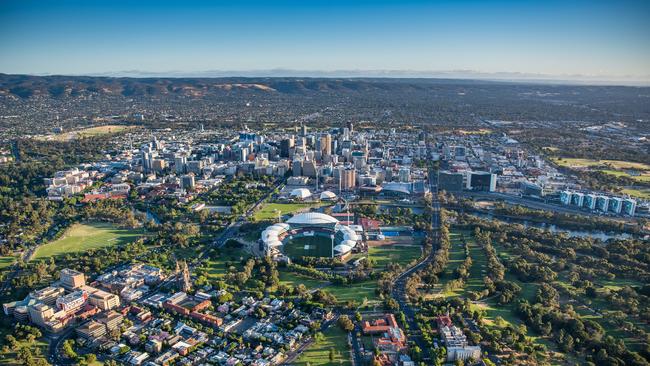
Adelaide Airport
First established in 1955, a dual international/domestic terminal was opened in 2005.
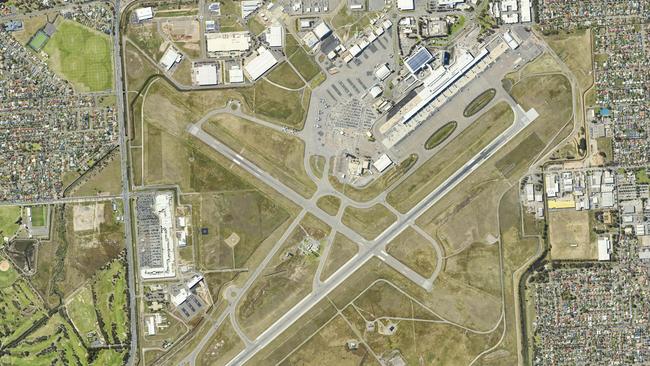
Albert Park
Named for Prince Albert, Albert Park was laid out in 1877 by a W.R. Cave.
Alberton
A corruption of the original name Albert Town, named in 1847 by Angas, Kingscote & Todd of the SA Company.
Aldinga
Claimed to be a corruption of an Aboriginal word meaning ‘much water’. Others claim it means ‘good place for meat’, ‘open, wide plain’ or ‘tree district’.
Aldinga Beach
See Aldinga
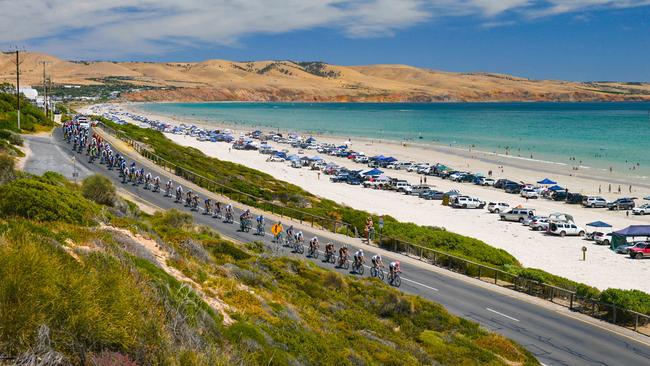
Allenby Gardens
Field Mashal Lord Allenby led an army in Palestine during World War I.
Andrews Farm
Named after early property holders in the area.
Angle Park
Named in the 1950s by SA Housing Trust.
Angle Vale
Angle Vale was named to describe the area - with an angled road cutting through it.
Angle Vale Post Office opened on 1 October 1866
Ascot Park
Named after the English racecourse in 1914.
Ashford
Laid out by Charles J. Everard in 1909, the name comes from Kent, England.
Athelstone
Thomas Shepherd called the land Athelstone Estate. He died in Edinburgh, ten years later, 20 miles from the village of Athelstaneford.
Athol Park
Name probably taken from Athol Farm, a property that once occupied the area. Athol is a district of Perth, Scotland.
Auldana
It stands on the site of a once-famous vineyard “Auldana” established by Patrick Auld.
Banksia Park
Named by Fairview Park Shopping Centre Pty Ltd in 1967 after the native Australian plant.
Beaumont
Samuel Davenport named an existing property after the French town Beaumont which means
beautiful mount.
Bedford Park
Edwin Joseph Hancock built a homestead in the area, naming it Bedford after family connections in earlier generations with the Bedford family in England.
Bellevue Heights
Name proposed by May and Margaret Mills in 1965 but was initially refused because it was believed it would cause confusion with the existing Bellevue at McLaren Vale.
Beulah Park
Originally called Rosaville, Beulah Estate was laid out in 1912 and later extended as Beulah Park. Beulah Rd originally led to the village of Beulah, named after a village in Wales.
Beverley
Named by Edward Stephens in 1850, possibly named after a town in Yorkshire, England.
Birkenhead
Named by Thomas Elder and John Hart in 1864, possibly named after a Birkinhead in Cheshire, England.
Black Forest
Named after a dark forest that used to occupy the area and was frequented by bush rangers and cattle thieves.
Blackwood
Robert Burfield was granted a publicans licence in 1869 for the Blackwood Inn (now The Belair Hotel). The name Blackwood was apparently derived from the dark barked blackwood or peppermint gum trees.
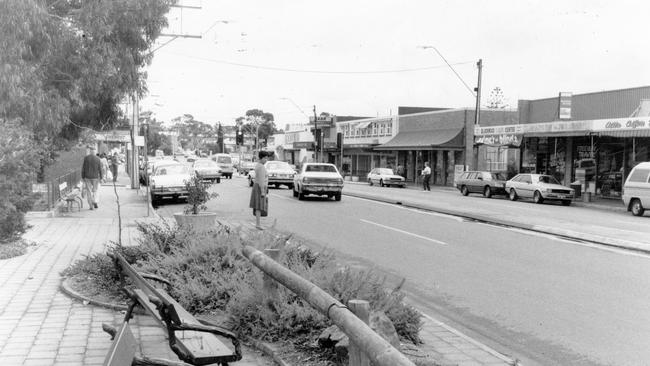
Blair Athol
Celtic for a plain cleared of trees, and takes its name from the home of the Magarey family.
Blakeview
Blakeview is named after Joseph Blake, an early blacksmith in the area.
Bolivar
The hotel was built by Mr. Walpole, who arrived on the ship “Bolivar” in 1850.
Bowden
The Village of Bowden was created around 1842 by Sir J.H. Fisher and named after his native town in Northamptonshire, England.
Bradbury
Name taken from a village in Durham, England.
Brahma Lodge
Named after the trotting horse stud run by Frank Reiss who first sold the land in 1960.
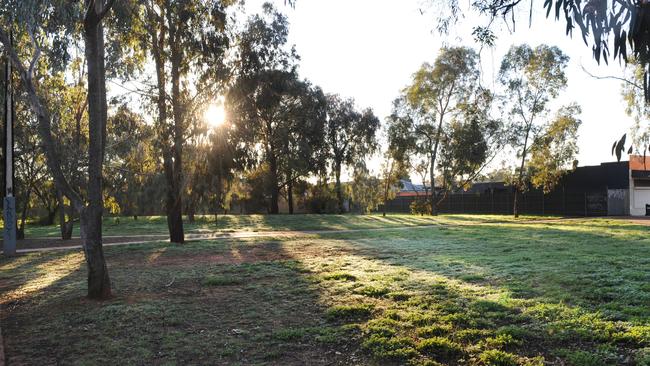
Brighton
Named by Matthew Smith, solicitor, in 1839 after the seaside resort town in Sussex or New Brighton in Liverpool. The suburb’s main industries in the 1840s were whaling and smuggling.
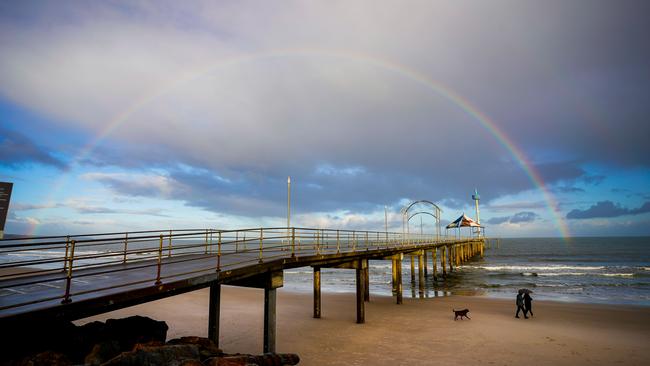
Broadview
Originally a private subdivision laid out by C H Angas & K D Bowman in 1915. Later housing developments obstructed the panoramic views.
Brompton
Name comes from Yorkshire, England where settler William Paxton was born.
Brooklyn Park
The adjacent suburb of Brooklyn was created by Oscar Gorger and Edward Lipsett in 1881 and probably named after the American city.
Buckland Park
Named after an early property in the area established by Messrs William Allen and John Ellis.
Burnside
Possibly named by Peter Anderson who called his property near Second Creek Burnside.
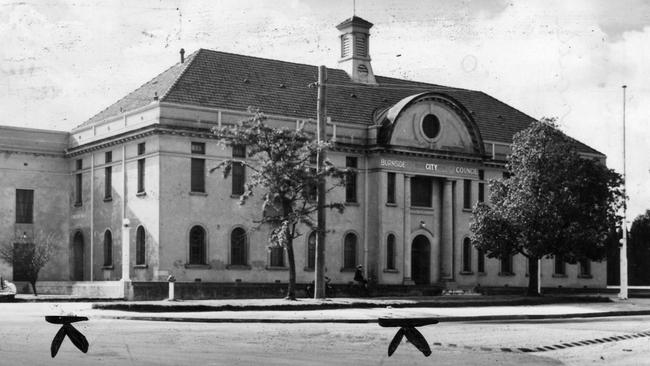
Burton
A small Methodist church in the area was known as Burton. The first licensee of the ‘Bolivar Hotel’ came from ‘Burton Latimer’ in Northamptonshire, England, and the second licensee was H.W. Burton.
Camden Park
Campden Estate was created by Florence M, Mackenzie of Campden in 1914.
Campbelltown
Campbell bought the land from S.G. Smith in 1842 and subdivided about 1846.
Carey Gully
Corporal Young, Royal Sappers and Miners refers to the gully in a survey book as Paddy Carey’s Gully, though Patrick ‘Paddy’ Carey never owned land there.
Cavan
Takes its name from the Hotel ‘The Cavan Arms’, licensed in 1855 by R.B Colley who was born in County Cavan, Ireland.
Chandlers Hill
Named after shepherd Charles Chandler, who resided at Unbunga and came to South Australia in the John Pirie in 1836.
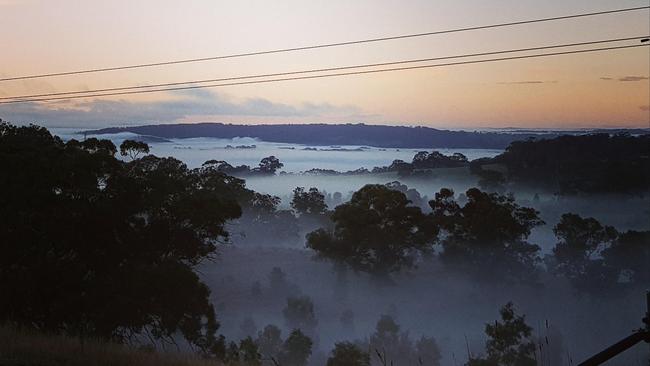
Cheltenham
Native town of John Denham. Cheltenham is a town in Gloucester.
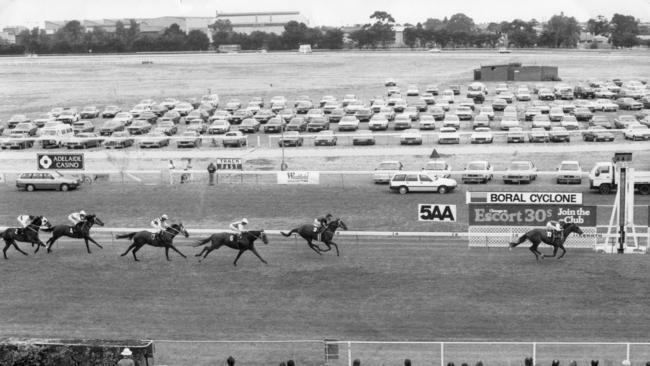
Cherry Gardens
Named after the abundance of native cherry trees that used to exist in the area.
Christie Downs
See Christies Beach.
Christies Beach
Lambert F.B. Christie purchased the land in 1858 and his wife Rosa Christie was the landowner when the land was subdivided in 1924/25.
Clapham
The town shares the same name as Clapham Junction, which was named after the suburban
London railway station of the same name.
Clarence Gardens
Clarencefield is a town in Dumfries, Scotland which the original owners, the Macklin family, may have been connected to.
Clarence Park
See Clarence Gardens.
Clarendon
Clarendon occurs in Canada, Jamaica and the USA - all believed to have been named after the aristocratic English family. There is a Clarendon Park in Wiltshire, England.
Clearview
Clearview was laid out by Clearview Ltd in 1922 and named because the suburb offered views of the Adelaide plains and the River Torrens.
Clovelly Park
Named after the town of Clovelly in Devon, England by Messrs R., D.M. and P. Mitchell, in 1928, as executers of Richard Mitchell.
College Park
On account of its proximity to St. Peters College and named by Henry S. Anthony and William Dixon in 1874.
Collinswood
May have been named after his George F. Angas’ daughter-in law Suzanne Collins.
Colonel Light Gardens
Named by Charles C Reade in 1915. Unimpressed with Adelaide’s haphazard development, he wanted to create a model suburb with allocation for schools, recreation areas and public buildings. If you have to ask who it was named after, you probably aren’t from around here ...
Concordia
Subdivision undertaken by L. Simon, F.A. Oehm and L. Belling in 1877, when part of it was sold to the government for education purposes. Concordia School opened in 1861 and Concordia is the Roman Goddess of Peace and Harmony.
Coromandel East
See below
Coromandel Valley
The ship Coromandel arrived at Port Adelaide on 12 January 1837, when ten of the crew deserted and found refuge in a valley in the Mount Lofty Range.
Cowandilla
Named by Edwin C. Gwynne in 1840. Possibly a reference to the aboriginal word kaunenna-dlla, meaning ‘the locality of the waters’ specifically relating to the Glenelg area.
Craigburn Farm
The suburb began when part of Minda Home’s Craigburn Farm was subdivided in the late 1990s.
Craigmore
Craigmore is named after an early homestead in the district.
Croydon
Means ‘chalk hill’. Named by owner Philip Levi who was born in Surrey, England - that country has a Croydon.
Croydon Park
See Croydon
Cumberland Park
Contains an original subdivision named Cumberland by Ernest T. Saunders and Edwin Ashby in 1913. The name comes from Wales and means compatriots or fellow countrymen.
Darlington
Named by Flagstaff Inn licensed victualler Samuel Lewis after the town in Durham, England.
Davoren Park
Named after a pioneering family in the district in 1983.
Daw Park
J.W. Daw owned land adjacent to South Road.
Dernancourt
A subdivision by Richard Arthur Hobby in 1923 which takes its name from a town in France which was the scene of World War 1 battles. A Private L. R. Hobby served in the 27th Battalion.
Devon Park
Laid out by Lavinia and George Charles Braund in 1920 and named after the English town.
Dorset Vale
An English name given to a post office and telephone exchange near Clarendon, circa 1850. Its local name was ‘Scotts Bottom’.
Dover Gardens
The name has English origins.
Dudley Park
Earl of Dudley was Governor-General of the Commonwealth 1908-1911.
Dulwich
Named in 1854 by John Hector and named after a town in Surrey, England.
Eagle On The Hill
Named after a stone eagle kept at the hotel on the hill. The hotel was built in 1853, opening as Andersons Inn, but soon renamed to accompany the nearby “Eagle’s Nest” residence. Unlike the rest of the hotel the stone eagle survived the 1983 Ash Wednesday bushfires.
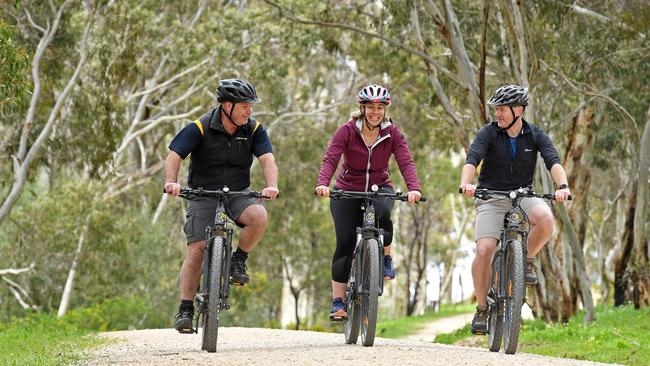
Eastwood
The suburb lies east of Parkside and was densely forested at the time of naming.
Eden Hills
It was either named by E. Ashby being a description of the areas natural beauty or named by William Datmar Cook who was at one time the Master of the sailing barque “Eden”.
Edinburgh
Named after the Duke of Edinburgh.
Edwardstown
Lawyer William Edwards laid out the town in 1838 and named it Edwardstown.
Elizabeth
Named after Her Majesty, Queen Elizabeth II in 1955.
Elizabeth Downs
See Elizabeth
Elizabeth East
See Elizabeth
Elizabeth Grove
See Elizabeth
Elizabeth Heights
See Elizabeth
Elizabeth North
See Elizabeth
Elizabeth Park
See Elizabeth
Elizabeth South
See Elizabeth
Elizabeth Vale
See Elizabeth
Elizabeth West
See Elizabeth
Enfield
Named by George Hickox in 1843 after his birthplace in Middlesex, England.
Erindale
A house of the same name was built in the area around 1850. Erin is of Irish origin.
Ethelton
Named by Doctor Phillips after one of his 6 daughters who died a young girl.
Evandale
Henry Goss bought a subdivision in 1861 and built ‘Evandale House’ on it. The home was sold by the mortgagee in 1885.
Evanston
Named in 1850 by James Philcox. Origin unknown.
Evanston Gardens
See Evanston.
Evanston Park
See Evanston.
Evanston South
See Evanston.
Everard Park
Dr Charles D. Everard farmed land in the Unley District from 1838 til he died in 1876.
Exeter
There is an Exeter in Devonshire and an Exeter Hall in London. The resolution to form an association for the colonisation of SA was carried here.
Fairview Park
A descriptive name by B.E. and E.F.J. Chandler in 1967. Lt-Colonel Freeling once owned a property called Fairview near Walkerville.
Felixstow
Native village of Rev T.Q. Stow, original land owner in area.
Ferryden Park
Subdivision named in 1924 by William Duthie, formerly of Forfar, Scotland, where there is a
Ferryden.
Findon
G. L. Liptrott was the owner of the land circa 1855, and came from Worthing, near Findon in Surrey, England.
Firle
Named after Edward Castres Gwynne, who was born at Lewes in Sussex, England, near the towns of Firle and Glynde. His father was the Rector of Glynde.
Fitzroy
It was either named by William E Churcher in 1882 after the Melbourne suburb or after an
electoral district in England.
Flagstaff Hill
It is named after the hill in the area where Colonel William Light erected a flagstaff during his survey.
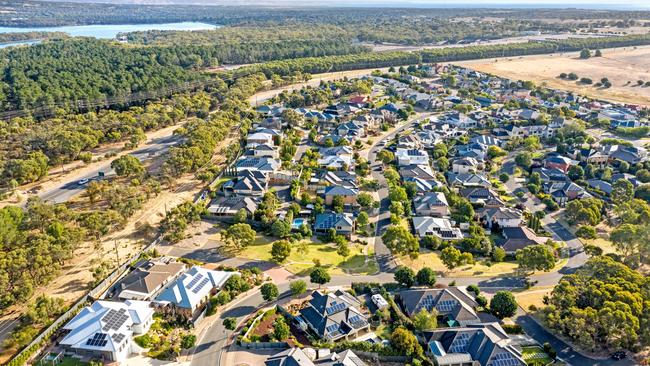
Flinders Park
The suburb is named after explorer Matthew Flinders, with many of its streets bearing the names of famous explorers.
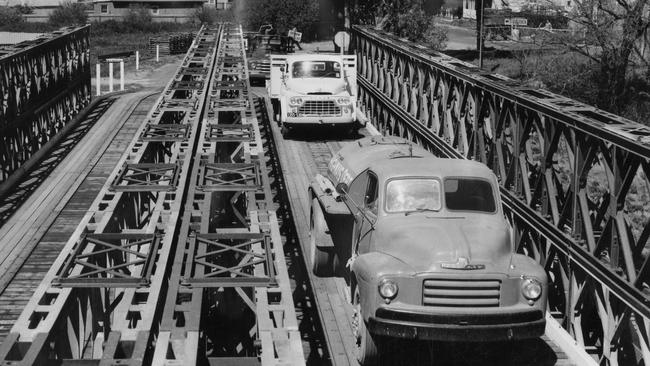
Forestville
The suburb is near Black Forest and was named by Andrew Ferguson in 1917.
Frewville
Named after an early settler James Frew who bought it in 1847 and subdivided in 1865.
Fulham
Originally owned by John White in 1836 and named Fulham Farm. He built his home from bricks brought over from England and the roof was thatched from local reeds.
Fulham Gardens
See Fulham.
Fullarton
Named by James Frew in 1849 whose wife was the former Jane Fullarton.
Gepps Cross
Isaac Gepp opened the Windmill Inn in the area after arriving on the Fairlie in 1840.
Gilberton
Joseph Gilbert of Pewsey Vale England purchased the property from Richard Blundell in 1839 after he was declared bankrupt and named it Gilbert Town.
Gilles Plains
Osmond Gilles, first Colonial Treasurer, held land in the area.
Gillman
Named after a former general traffic manager for South Australian Railways in 1950 when laid out by Rosewater Extension Limited.
Glandore
Taken from County Cork in Ireland, where one of the original settlers, John O’Dea, came from.
Glanville
Named after Glanville Hall, the original residence of Capt. John Hart Chief Secretary and Treasurer. It was named after Hart’s mother’s maiden name.
Glenalta
Sherwood Estates Limited named it after ‘a valley near a hill’ in 1961.
Glenelg
Named after Lord Glenelg, the secretary of state when the colony was founded in 1836. Town laid out in 1839. Known to the aborigines as Patawilya (cloggy green place) or Kaunennadla (place of waters).
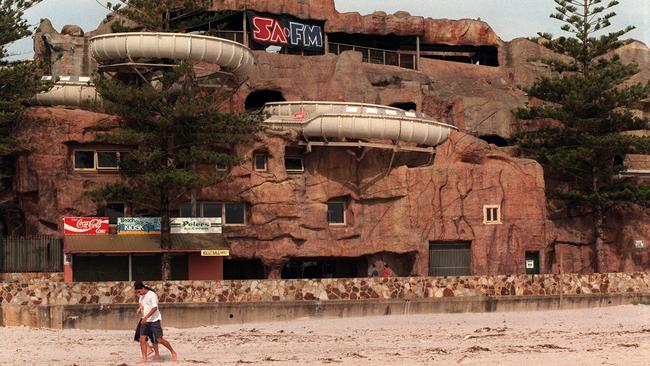
Glenelg East
See Glenelg.
Glenelg North
See Glenelg.
Glenelg North Shore
See Glenelg.
Glenelg South
See Glenelg.
Glengowrie
Means ‘Glen of Gowrie’, in honour of Lord Gowrie (formerly, Alexander Gore Arkwright Hore-Ruthven), Governor-General of Australia from 1936-1944.
Glen Osmond
Osmond Gilles was the first Colonial Treasurer & landowner in the area.
Glenside
Portion formerly known as Knoxville.
Glenunga
Named by Charles T Hargrave in 1882. ‘Glen’ because of its closeness to Glen Osmond and ‘unga’ which is aboriginal for ‘near to’.
Globe Derby Park
Created in 1998 by renaming that portion of Bolivar involved with the horses and Globe Derby Park.
Glynde
Edward Castres Gwynne built a cottage at Payneham called Glynde Place and laid out the suburb in 1856.
Golden Grove
Captain Adam Robertson, of the ship the Golden Grove, settled here in 1846.
Goodwood
Named after the seat of the Duke of Richmond in Chichester, England.
Grange
Originally an estate named as ‘The Grange’ built by Charles Sturt.
Greenacres
A descriptive name by owner Christoph Samuel Mueller in 1919.
Greenhill
A descriptive name for the colour of the winter landscape, named by Hayborough Limited in 1954.
Greenwith
Greenwith Methodist Church built in 1866. The suburb was named in 1977.
Gulfview Heights
A descriptive name.
Hackham
Either named by Edward Castle, who sold the town, after his home in England, or previous land owner James Kingsdon, or named after JB Hack who lived in the area in 1837.
Hackney
The ‘Village of Hackney was created in 1847 and was named after Hackney in London.
Hallett Cove
John Hallett discovered the cove while looking for missing stock in 1837.
Hampstead Gardens
Named after the town in London, England.
Happy Valley
A descriptive name by Edward Burgess, who landed at Holdfast Bay and was at the first Methodist service on mainland South Australia in 1837.
Hawthorn
A common place name in England. The suburb was named by Edward Thornber and David Garlick in 1880.
Hawthorndene
Taken from a line in Sir Walter Scott’s poem The Lay of the Last Minstrel: ‘and seen from cavern’d Hawthornden’ by the Austin family.
Hazelwood Park
Francis Clark bought a property on Greenhill Rd in 1850 and named it Hazelwood after Hazelwood School in Birmingham.
Heathpool
Named by the father of George Reed after his native town in Northumberland, England.
Hectorville
Named by Partick Boyce Coglin after the first full time officer for the Savings Bank of SA, John Hector.
Hendon
Named by Captain Henry John Butler who established an aerodrome there, and named the suburb after an English airport.
Henley Beach
Name adapted from Henley-on-Thames in England and named by Arthur Harvey, Henry S. Anthony and William P. icksteed in 1877.
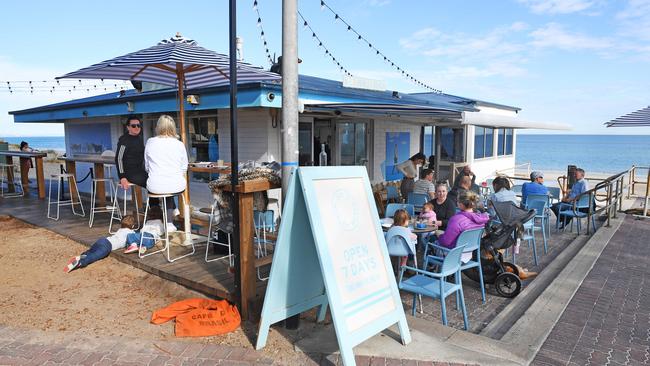
Henley Beach South
See Henley Beach.
Highbury
Named after Highbury in north London, England.
Highgate
Named by F.J. Botting, who laid out the area in 1881, after his birthplace in London.
Hillbank
Hillbank was previously known as Elizabeth Heights, and is a descriptive name.
Hillcrest
A descriptive name.
Hilton
Named after Matthew Hill QC, the original land owner.
Hindmarsh
Named after South Australia’s first Governor, John Hindmarsh. It was the first private town
laid out in the colony.
Holden Hill
Corruption of the name of Robert Haldon, an original landowner in the area.
Hope Valley
Named by William Holden, a butcher and storekeeper in 1842. His store burnt down but he said he felt “inspired by hope”, hence the name. He later left the area when his wife was killed in an accident in 1851.
Hove
Named after Hove near Brighton, England.
Huntfield Heights
The Hunt family were landowners in the area, and served in many capacities in the local community.
Hyde Park
Named after Hyde Park in London, England.
Ingle Farm
Name taken from a farm that was located on the land. It was named by Jabez Rowe because he had married a Miss Wright, who was from Inglewood.
Inglewood
Land originally purchased by Firmin Deacon, who built a pub on the land and named it ‘Inglewood’. The name comes from Yorkshire, England.
Ironbank
Named because iron was mined in the area in the 1850s.
Joslin
Named after Henry Joslin, a director of the South Australian Company.
Kalbeeba
A native word for ‘bark’.
Kangarilla
A corruption of the native word ‘Kangooarinilla’, meaning ‘where the sheep mother sits down’.
Kensington
Named by Charles Catchlove after Kensington, near London.
Kensington Gardens
See Kensington. Originally known as Pile’s Paddock.
Kensington Park
See Kensington.
Kent Town
Named after Dr Benjamin Archer Kent, the first occupier of the area.
Kersbrook
Named by John Bowden after his birthplace in Cornwall, England.
Keswick
Named after Keswick in Cumberland, England.
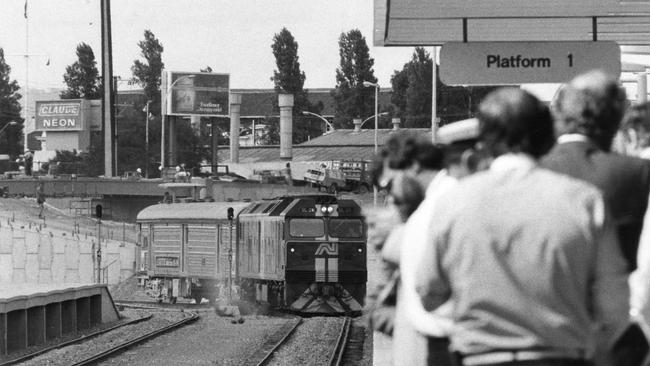
Kidman Park
Named after Sir Sydney Kidman, who was known as the ‘cattle king’.
Kilburn
Originally known as Chicago, but this title was never officially recognised in the Land Titles
Office. Kilburn is named after a suburb of London.
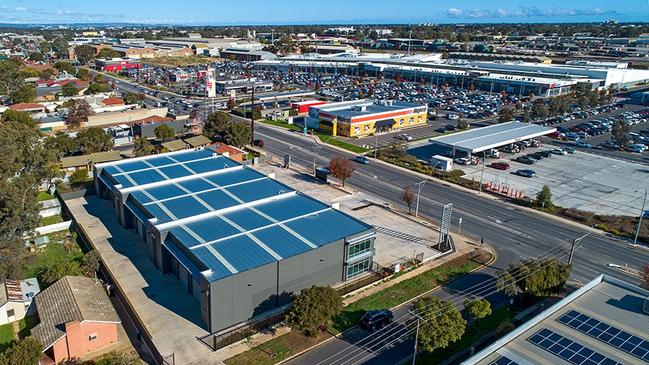
Kilkenny
Named after Kilkenny in Ireland.
Kings Park
Believed to commemorate King Edward VII.
Kingston Park
Named after George Strickland Kingston, who owned the land.
Kingswood
Possibly named after Stuart King, a member of John McD Stuart’s expedition of 1861-1862, or the Kingswood in Gloucestershire, England.
Klemzig
Named after a north German town, it was changed in 1916 to Gaza, a World War I battlefield at the time, and was reverted back in 1935. The native name for the area was Warkowodli-
Wodli.
Kurralta Park
Kurralta is the native word for ‘on the hill’ or ‘up there’.
Largs Bay
Named after Largs on the Firth of Clyde in Scotland.
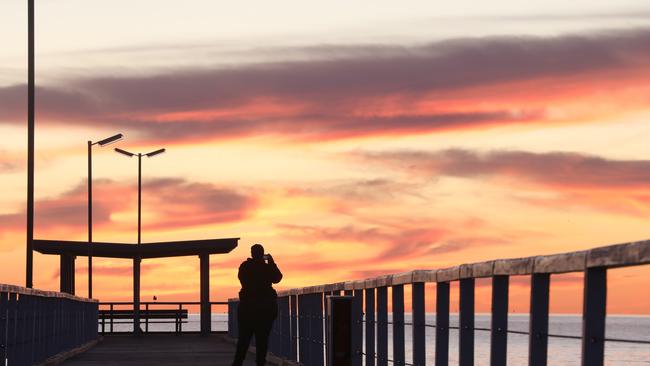
Largs North
See Largs Bay.
Leabrook
Named after a town in England.
Leawood Gardens
Name comes from Devon, England, and was applied by the original owner o fthe land, Margaret Gorton, who arrived on the Buffalo in 1836.
Linden Park
The name comes from “Linden”, the name of a property in the suburb. Linden is a Bavarian name, made famous in the poem Hohenlinden by Campbell.
Lockleys
Named after Lockleys in Hertfordshire, England.
Longwood
Named by an earlier settler, W. Colley, who was born in Longwood in Yorkshire.
Lonsdale
Named after an adjacent railway station, the origin of its name is not known.
Lower Mitcham
See Mitcham.
Lynton
Believed to be named after Lynton in Devon, England.
MacDonald Park
Created by MacDonald Reid Pty Ltd.
McLaren Flat
See McLaren Vale.
McLaren Vale
It was either named in 1837 after David McLaren, the commercial manager of the SA Company, or named after J.W. McLaren, a surveyor.
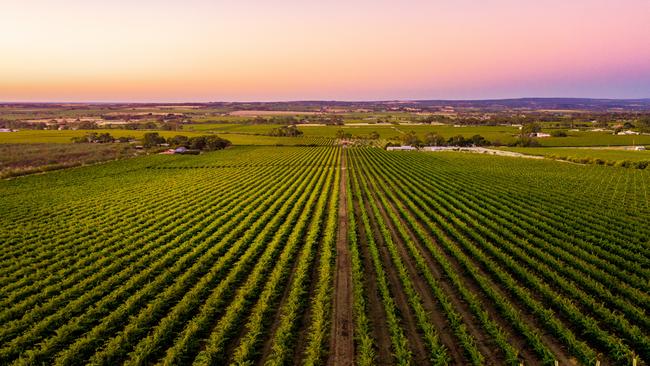
Magill
Surveyed in 1838 and originally laid out as Makgill, and was bought from the government by Messrs Robert Cock and William Ferguson in 1838. Named after Sir Maitland Makgill, who was the trustee for Mr Cock’s wife at the time of their departure from Scotland. The reason as to why the ‘k’ was dropped is unknown.
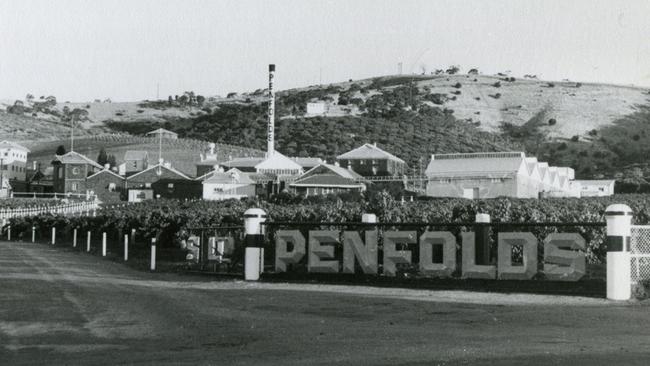
Malvern
Named after Malvern in Worcestershire.
Manningham
Named after Manninghima in Yorkshire, England.
Mansfield Park
Name taken from Mansfield, a town in Ayrshire, Scotland.
Marden
Laid out by Joseph Gilbert around 1848, who came from Marden in Whiltshire, England.
Marino
One of the earliest recorded names in South Austrlia. The name comes from the Italian spelling of “marine”.
Marion
Named after Miss Marion (or Marianne) Fisher, daughter of Sir J.H. Fisher, first resident commissioner.
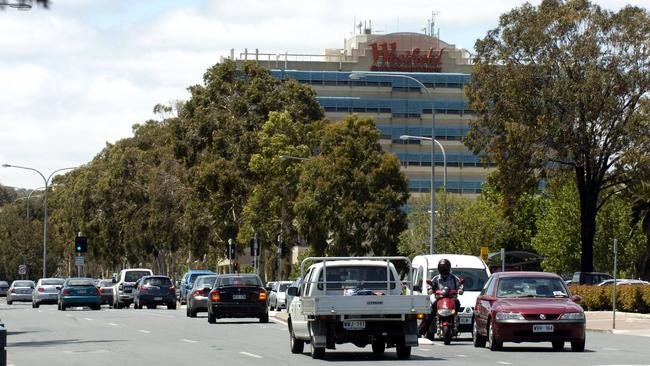
Marleston
Land originally owned by John Marles, who subdivided it in 1879.
Marryatville
The name comes from the maiden name of Governor Sir Henry Young’s wife, Augusta Sophia Marryat, who was the daughter of Charles Marryat of Park Field, Potter’s Bar, Middlesex, a niece of the novelist Captain F. Marrat RN, and a sister of Charles Marrat, Dean of Adelaide.
Maslin Beach
Originally owned by George Maslin, who bought the land in 1849 for Pound240.
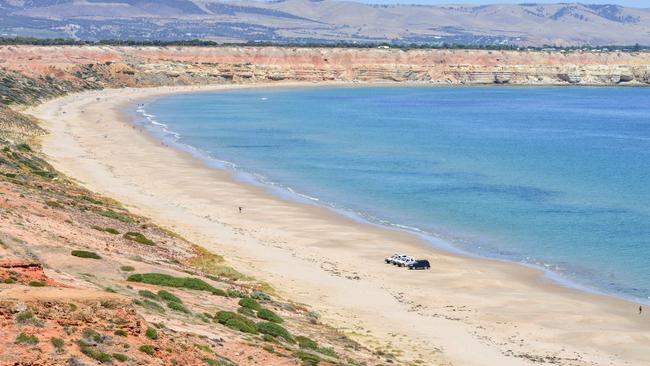
Maylands
Laid out by William Wadham and named after his second wife, Emma Josephine May.
Medindie
A native word, of which the original meaning in unknown. First spelt “Medindi”.
Medindie Gardens
See Medindie.
Melrose Park
Named after the aviator Jimmy Melrose, who competed in the 1934 England to Australia Air Race.
Mile End
Laid out by the South Australian Company in 1880 and named because it is a mile from Adelaide city.
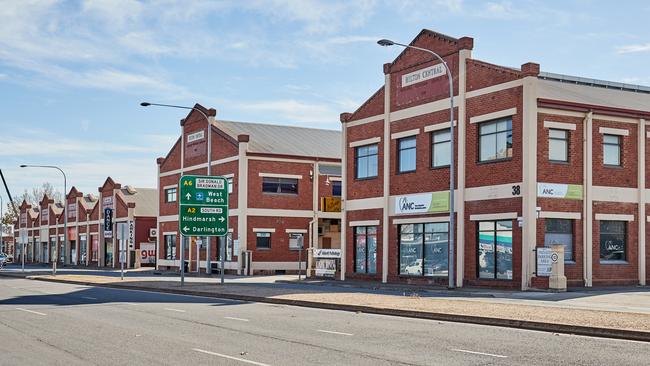
Mile End South
See Mile End.
Millswood
Named after George Mills, of Hills, Mills & Co. who owned the land.
Mitcham
Named after Mitcham in Surrey, England.
Mitchell Park
Named after Richard Mitchell, who subdivided the land in 1912.
Moana
Named after the Maori word for “blue water”.
Modbury
Named by R.S. Kelly in 1840 after his native town in Devonshire.
Modbury Heights
See Modbury.
Modbury North
See Modbury.
Montacute
Believed to be named after Montacute in Somerset, England.
Morialta
Native word meaning “ever flowing”.
Morphett Vale
Named after Sir John Morphett, a prominent early settler, who arrived in South Australia on board the Cygnet in 1836.
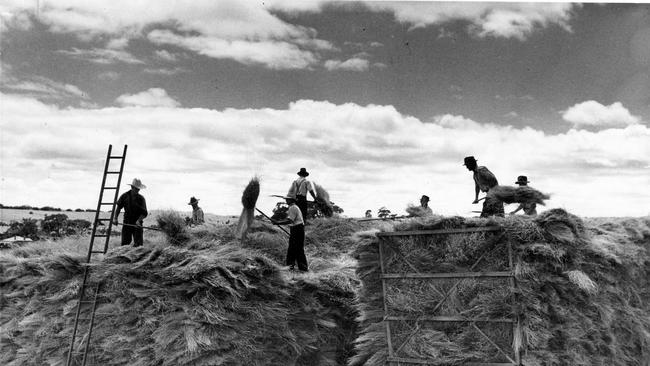
Morphettville
See Morphett Vale.
Mount Barker
Named by Captain Charles Sturt after his friend, Captain Collet Barker, who died at the Murray Mouth on April 30, 1831.
Mount Barker Junction
See Mount Barker.
Mount Barker Springs
See Mount Barker.
Mount Barker Summit
Mount Barker.
Mount Osmond
Named after Osmind Gilles, the first Colonial Treasurer.
Munno Para
Taken from a native word meaning “golden wattle creek”.
Munno Para Downs
See Munno Para.
Munno Para West
See Munno Para.
Myrtle Bank
Named by William Sanders, who bought a property and built a home on the land, which he named Myrtle Bank. His friend James Gall owned a property of the same name in Trinity, Edinburgh.
Nailsworth
Once covered by a forest of native pines, the area was first named Pine Forest. Enoch Fry, a farmer in the area, who named it after Nailsworth in England.
Netherby
Named after Netherby in Yorkshire, Cumberland.
Netley
Named by Thomas Hudson Beare, who owned the land, after the ruins of Netley Abbey in Hampshire.
New Port
Named by the developers of the land, who originally requested to create a new suburb called Newport Quays but this name was not supported.
Newton
In the 1850s the road to Woodforde was known as “Road to New Town”, which became “Newton Rd”, which eventually became the area’s name. Newton is also a common place name in England.
Noarlunga
A native name meaning “the place with the hill”.
Noarlunga Centre
See Noarlunga.
Noarlunga Downs
See Noarlunga.
North Adelaide
See Adelaide.
North Brighton
See Brighton.
Northfield
A descriptive name, and the name also appears in three English counties.
Northgate
Suburb created by renaming a portion of Northfield in June 2000, following a request by builder/developer A.V. Jennings.
North Haven
Name taken from the North Haven Indenture Act, which created the suburb. Creation of the suburb was originally opposed by the Post Master General due to its size the fact there was another North Haven in Australia.
North Plympton
See Plympton.
Norwood
Named after Norwood, near London, England.
Novar Gardens
Originally laid out as Morphettville by the State Bank of Australia in 1921. The name was changed to honour Sir Ronald Munro Ferguson, 1st Viscount Novar, who was the Governor-general of Australia from 1914 until 1920.
Oakden
Named after John Oakden, who explored west of Lake Torrens in 1851.
Oaklands Park
Originally laid out as Oaklands Estate, named after the English oaks that were planted on the property by the original owner, the Hon. J. Crozier.
O’Halloran Hill
Major O’Halloran was the commissioner of police and police magistrate in 1838.
Old Noarlunga
See Noarlunga.
Old Reynella
See Reynella.
One Tree Hill
The name Uley and One Tree Hill appear to have been used since the early 1850s to designate two separate portions of the area now known generally as One Tree Hill.
Onkaparinga Hills
A native name, originally spelt ‘Unkaparinga’, meaning ‘Mother river, plentiful’, and first given to Onkaparinga River.
Osborne
Captain Osborne was an early resident and well known Port Adelaide mariner, who built the first house in the area.
O’Sullivan Beach
Possibly named after an early settler in the district.
Ottoway
Land originally owned by Thomas Ottaway. The origin of the misspelling is unknown.
Outer Harbor
A descriptive name for a harbour further out than Port Adelaide.
Ovingham
Named after Ovingham in ngland.
Panorama
A descriptive name given because of the view of the plains and gulf from the area.
Paradise
Joseph Ind, who arrived in South Australia in 1837, named the land after his old farm in Gloucestershire, UK.
Parafield
Name taken from the native name “para”, meaning “river or creek”, and the English “field”.
Parafield Gardens
See Parafield.
Para Hills
Name taken from the native name “para”, meaning “river or creek”, and “Hills” to describe the area.
Para Hills West
See Para Hills.
Paralowie
Name taken from the native name “para”, meaning “river or creek”, and “lowie” meaning water. It is also the name of a very old farmhouse in the area.
Para Vista
Name taken from the native name “para”, meaning “river or creek”, and “vista” being descriptive.
Parkholme
A descriptive name meaning “a flat, park-like area near a river”.
Parkside
Named because it was next to the parklands that surround Adelaide.
Pasadena
Possibly named after Pasadena in California, USA. Pasadena was adopted in 1967 after residents opposed the proposed name Centennial Park.
Payneham
Named after Samuel Payne, who was the original landowner
Payneham South
See Payneham.
Penfield
Penfield is named after William Penfield, an early resident in the area.
Penfield Gardens
See Penfield.
Pennington
Named after one of the three Pennington’s in England.
Peterhead
Named after Peterhead in Aberdeen, Scotland.
Pinky Flat
The exact origin is unknown, but one theory is that during the 1930s depression the area was used as a camping ground by unemployed people, who were known to consume a cheap wine called “pinky”.
Plympton
The pioneer John Crews named his farm Plympton after his birthplace in Devonshire.
Plympton Park
See Plympton.
Pooraka
A native name meaning “dry waterhole”.
Port Adelaide
Named by Colonel William Light as the port of Adelaide.
Port Gawler
See Gawler.
Port Noarlunga
See Noarlunga.
Port Noarlunga South
See Noarlunga.
Port Willunga
See Willunga.
Prospect
Named due to the prospect the locality presented, with its views over the plains and the parklands.
Queenstown
Named in honour of Queen Victoria in 1848.
Redwood Park
Named by Realty Building Co. in 1964 with no origin known.
Reeves Plains
Named after Samuel Reeves, who came across the plain when looking for land for the South Australian Company.
Regency Park
Name taken from the adjacent Regency Rd, which was adopted after the first visit by Queen Elizabeth II to South Australia.
Renown Park
Named in 1920 shortly after the H.M.S. Renown brought the Prince of Wales to Australia.
Reynella
John Reynell laid out the town in 1854, and is recorded as planting the first vineyard and making the first wine in South Australia.
Reynella East
See Reynella.
Richmond
Named after a town in Surrey, England.
Ridgehaven
A descriptive name for the subdivision where the homes were to be situated on high areas.
Ridleyton
Named after John Ridley, who was the inventor of the Ridley Stripper, an agricultural machine.
Risdon Park
Named by Mr A. B. Cashmore after Risdon Cove in Tasmania, which was named by John Hayes in 1794 after a Devonshire family.
Risdon Park South
See Risdon Park.
Rose Park
Named in 1878 by Sir John Rose, G.C.M.G., who was the Chairman of the S.A. Company. Sir Rose named it after himself even though “Prescott”, an early lessee of the sections was submitted to him as a possible name.
Rosewater
Named by Phillip Levi, who owned the area, to offset the smell of stagnant water from a nearby swamp.
Rosslyn Park
A Scottish name for a subdivision made in 1878. There is an Earl of Rosslyn, which is a combination of the two Celtic words ‘ros’, meaning ‘promontory’, and ‘lynn’, meaning deep pool. Roslin Castle was also the original home of the Scottish noble family.
Rostrevor
Named after Rostrevor in County Down, Northern Ireland.
Royal Park
Named by T.J. Matters, the land agent who subdivided the area. It was originally known as ‘Piggery Park’, because of the pig farms and abattoirs that were once there.
Royston Park
Named by land agent Stephen Parsons, whose wife went to school in Royston in Yorkshire, England.
Salisbury
Laid out and named by John Harvey after Salisbury in Wiltshire, England.
Salisbury Downs
See Salisbury.
Salisbury East
See Salisbury.
Salisbury Heights
See Salisbury.
Salisbury North
See Salisbury.
Salisbury Park
See Salisbury.
Salisbury Plain
See Salisbury.
Salisbury South
See Salisbury.
Seacliff
A descriptive name.
Seacliff Park
See Seacliff.
Seacombe Gardens
Named after Seacombe in Cheshire, England.
Seacombe Heights
See Seacombe Gardens.
Seaford
Probably named after Seaford in East Essex, England.
Seaford Heights
See Seaford.
Seaford Meadows
See Seaford.
Seaford Rise
See Seaford.
Seaton
Probably named by Gifford Tate after Seaton in Devon, England.
Seaview Downs
Descriptive name for the views to the sea.
Sefton Park
Named after a railway station in Lancashire, England.
Sellicks Beach
Named after William Sellick, an early settler.
Sellicks Hill
See Sellicks Beach.
Semaphore
Named because the site was chosen for a signal station and landing place in preference to Glenelg in 1837, a year after the colony was founded.
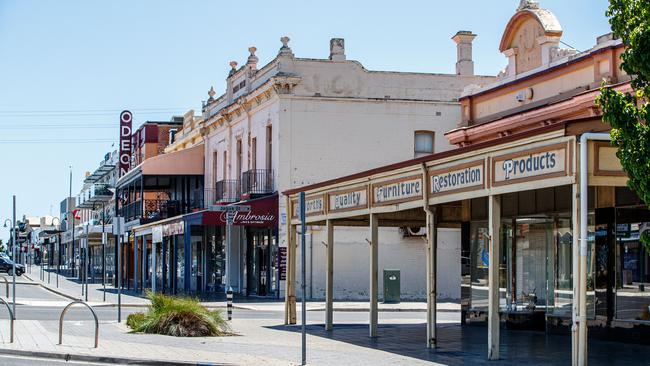
Semaphore Park
See Semaphore.
Semaphore South
See Semaphore.
Sheidow Park
Named after the Sheidow family.
Skye
Created by Skye Estate Ltd.
Smithfield
Named after John Smith, an early landowner in the area and built the Smithfield Hotel in the 1850s.
Smithfield Plains
See Smithfield.
Somerton Park
Named after Somerton in Somerset, England.
South Brighton
See Brighton.
South Plympton
See Plympton.
Springfield
Named after Springfield in Surrey, England.
Stepney
Named by George Muller after Stepney in London, England.
Stonyfell
Name means “a rocky hill”, named by Annie Montgomery Martin.
Sturt
Named after the explorer Charles Sturt.
Surrey Downs
Named after the English county.
St Agnes
Named on 5 November 1959 after the products of Angoves Pty Ltd, vignerons and distillers. Dr Angove settled in the area in the early 1880s and St Anges is the patron saint of purity.
St Clair
The name was chosen to reflect the history of the area. St Clair was first used by Robert R Torrens for his home, built circa 1842. After twelve years the property was sold and a second grander home name St Clair was built by Mr Stoddard R Clarke in 1850 adjacent the current Woodville Road. This home remained until the mid 1900s when it was demolished but the use of ‘St Clair’ has been retained in the area through the recreation oval and the St Clair Youth Centre.
St Georges
Named after a competition operated in 1918 by Horace Allen and Barton, land estate agents of Unley. After 400 entries, H.E. Lewis of Malvern’s suggestion was chosen.
St Kilda
Named after the island of St Kilda, off the Scottish Coast.
St Marys
Named by the father of John Wickham Daw, who owned the land and helped to establish the Church of St Mary’s.
St Morris
Laid out by Henry Woodock about 1880 and named after his wife, who married twice. Her maiden name was Morris and her first married name was Saint.
St Peters
The subdivision of St Peters was created by Joseph Jackman in 1884 and took its name from the adjacent college.
Surrey Downs
Named after the English county.
Taperoo
A native word meaning “calm”.
Tea Tree Gully
A descriptive name of trees that grew in the area.
Tennyson
Baron Tennyson was Governor of South Australia from 1899 to 1902, and second Governor-general of Australia. He was also the son of Poet Laureate Alfred, Lord Tennyson.
Teringie
An early homestead in the district was called Teringie.
Thebarton
Name of the house was taken from Colonel Light’s English home - Theberton Hall. Thebarton was the first village laid out outside of the City of Adelaide. The current spelling with a central “a” is believed to have come about through a typographic error.
Thorngate
Named after William Battye Thorngate, the proprietor of Thorngate Estate in South Australia.
Toorak Gardens
Toorak is a native word meaning “swamps, springs”.
Torrens Island
The River Torrens was named by Colonel Light in 1936 in honour of Colonel Robert Torrens, Chairman of the South Australian Colonization Commissioners, and father of Sir Robert Richard Torrens, author of the Real Property Act.
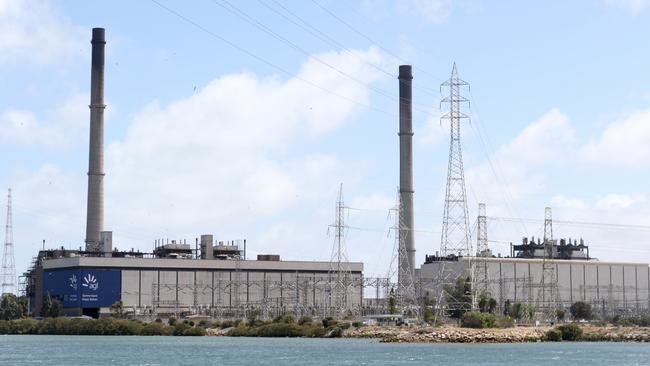
Torrens Park
See Torrens Island.
Torrensville
See Torrens Island.
Tranmere
Named in 1838. The house was named after a place near Birkenhead, Liverpool, England.
Trinity Gardens
A subdivision of glebe land owned by the Holy Trinity Church.
Trott Park
Possibly named after an early settler in the district.
Tusmore
Named by William Rogers, pastoralist in 1839.
Underdale
Laid out and named by John Symonds Williams in the early 1850s, with no reason known for the choice of name.
Unley
Undley Hall or Parish is located in the parishes of Mildenhall and Lakenheath in Suffolk, Whistler’s home County. Was originally thought to have been named after his wife’s maiden name.
Unley Park
See Unley.
Upper Hermitage
Named by Thomas Williams, one of the largest shareholders in the South Australian Company, after Hermitage in Northampton, England.
Upper Sturt
Named after Captain Charles Sturt.
Urrbrae
Urrbrae is Scottish for “our valley”. It may also have been named by Robert Forsyth MacGeorge after his Scottish hometown Urr, and “brae”, Scottish for the side of a hill.
Vale Park
Vale House was the home of Phillip Levi, a pastoral pioneer.
Valley View
Descriptive name given by a subdivision by Pleasent Hills Estate in 1960.
Vista
A descriptive name.
Walkerville
Named by Captain Walker, R.N. in 1838.
Walkley Heights
Named by Dept. of Environment and Planning.
Warradale
Taken from the native word “warra”, meaning timber, and “dale”, meaning valley.
Waterfall Gully
A descriptive name due to the waterfall located in the area.
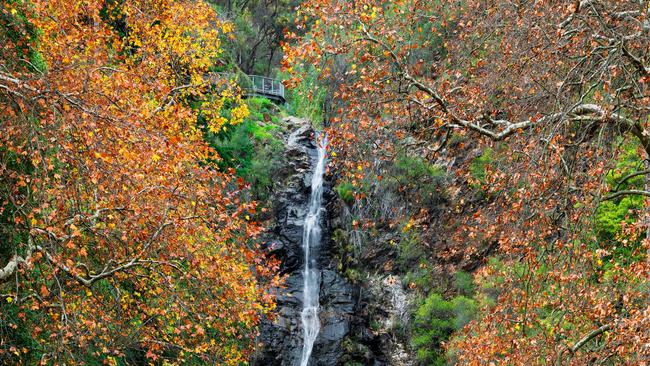
Waterloo Corner
Believed to be named after the Battle of Waterloo.
Wattle Park
A descriptive name of the area which was once densely covered with wattle trees.
Wayville
Named after Way College, which was erected in memory of Reverent J. Way, father of Sir Samuel Way.
Welland
Named after Welland in Northampton, England.
West Beach
A descriptive name for a beach west of Adelaide.
West Croydon
See Croydon.
West Hindmarsh
See Hindmarsh.
West Lakes
Name established by the West Lakes Development Act in 1969 to describe a man-made lake west of the city.
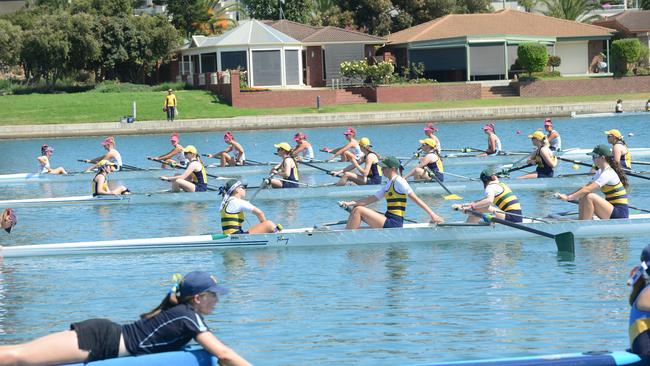
West Lakes Shore
See West Lakes.
West Richmond
See Richmond.
Westbourne Park
Westbourne is a well-known London name.
Willunga
Willaunga means place of green trees.
Willunga Hill
See Willinga.
Willunga South
See Willunga.
Windsor Gardens
Named after Windsor in England, named by Nathaniel Hailes in 1849.
Wingfield
Richard William Wingfield was the private secretary to Governor Jervois. Subsequently used as a suburb name.
Woodcroft
Proclaimed in 1985, takes it name from the Early Day Woodcroft Farm.
Woodforde
Named after Dr John Woodforde, who came to South Australia on Rapid with Colonel William Light.
Woodville
Woodville is a descriptive name of the well-timbered locality.
Woodville Gardens
See Woodville.
Woodville North
See Woodville.
Woodville Park
See Woodville.
Woodville South
See Woodville.
Woodville West
See Woodville.
Wynn Vale
Possibly named after an early settler in the district.
Yatala Vale
Yatala was the name applied by the Weera tribe of Aborigines to the country north of the Torrens, from Port Adelaide to Tea Tree Gully.
PLEASE NOTE:
Information here is taken from the Dept of Planning, Transport and Infrastructure Gazetter, The Romance of Place Names of South Australia by Geoffrey H Manning, Place Names of South Australia by R Praite and JC Tolley and What’s in a Name? Nomenclature of South Australia by Rodney Cockburn. Every effort has been taken to ensure the accuracy of this list, however, there are varying accounts of the history of some suburbs.
This article was originally published by The Advertiser in October, 2013.


